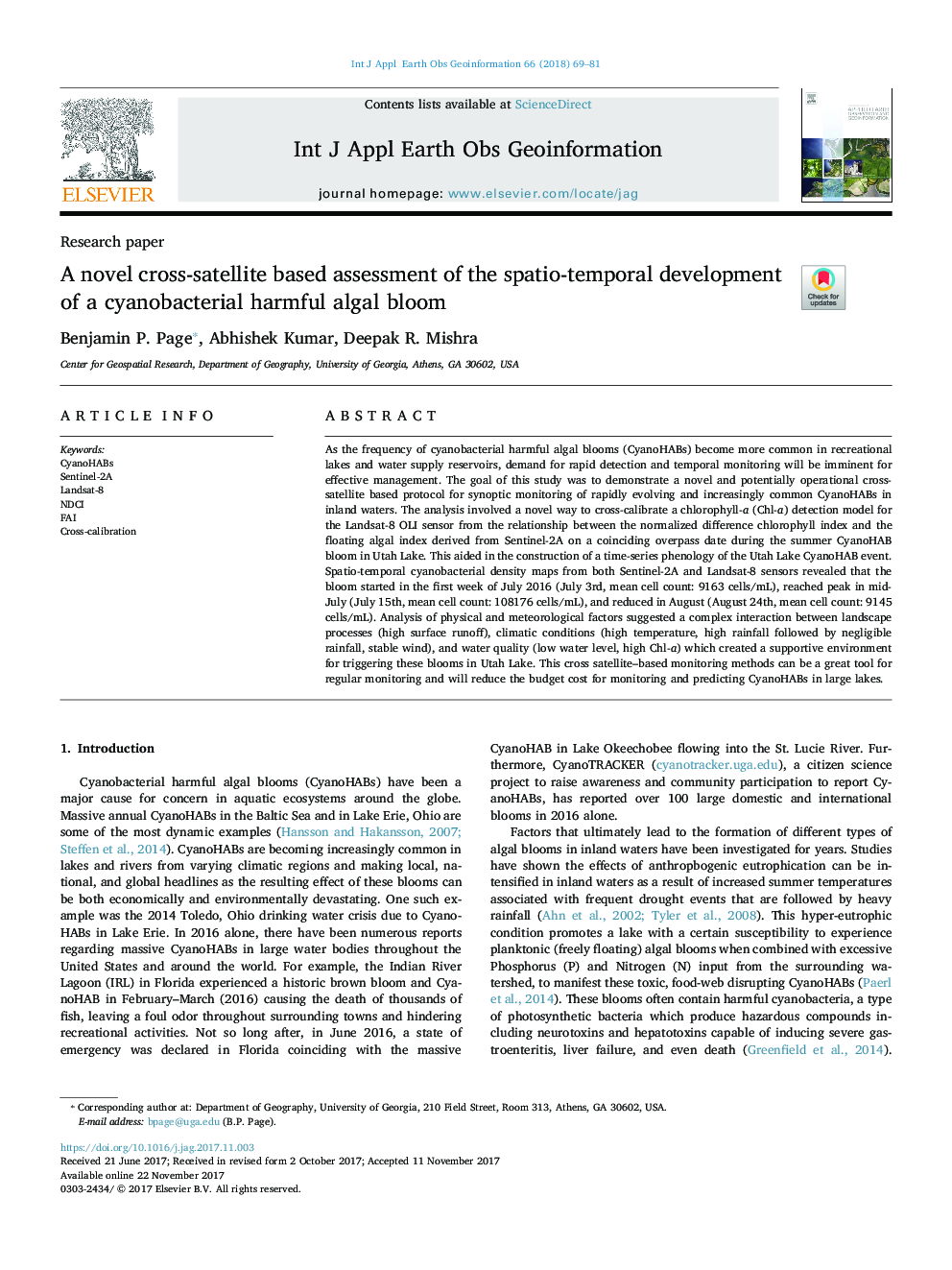| کد مقاله | کد نشریه | سال انتشار | مقاله انگلیسی | نسخه تمام متن |
|---|---|---|---|---|
| 8867965 | 1621791 | 2018 | 13 صفحه PDF | دانلود رایگان |
عنوان انگلیسی مقاله ISI
A novel cross-satellite based assessment of the spatio-temporal development of a cyanobacterial harmful algal bloom
ترجمه فارسی عنوان
یک ارزیابی جدید براساس ماهواره ای از توسعه فضایی-زمانی از شکوفه های جلبکی مضر سیانوباکتریایی
دانلود مقاله + سفارش ترجمه
دانلود مقاله ISI انگلیسی
رایگان برای ایرانیان
موضوعات مرتبط
مهندسی و علوم پایه
علوم زمین و سیارات
کامپیوتر در علوم زمین
چکیده انگلیسی
As the frequency of cyanobacterial harmful algal blooms (CyanoHABs) become more common in recreational lakes and water supply reservoirs, demand for rapid detection and temporal monitoring will be imminent for effective management. The goal of this study was to demonstrate a novel and potentially operational cross-satellite based protocol for synoptic monitoring of rapidly evolving and increasingly common CyanoHABs in inland waters. The analysis involved a novel way to cross-calibrate a chlorophyll-a (Chl-a) detection model for the Landsat-8 OLI sensor from the relationship between the normalized difference chlorophyll index and the floating algal index derived from Sentinel-2A on a coinciding overpass date during the summer CyanoHAB bloom in Utah Lake. This aided in the construction of a time-series phenology of the Utah Lake CyanoHAB event. Spatio-temporal cyanobacterial density maps from both Sentinel-2A and Landsat-8 sensors revealed that the bloom started in the first week of July 2016 (July 3rd, mean cell count: 9163 cells/mL), reached peak in mid-July (July 15th, mean cell count: 108176 cells/mL), and reduced in August (August 24th, mean cell count: 9145 cells/mL). Analysis of physical and meteorological factors suggested a complex interaction between landscape processes (high surface runoff), climatic conditions (high temperature, high rainfall followed by negligible rainfall, stable wind), and water quality (low water level, high Chl-a) which created a supportive environment for triggering these blooms in Utah Lake. This cross satellite-based monitoring methods can be a great tool for regular monitoring and will reduce the budget cost for monitoring and predicting CyanoHABs in large lakes.
ناشر
Database: Elsevier - ScienceDirect (ساینس دایرکت)
Journal: International Journal of Applied Earth Observation and Geoinformation - Volume 66, April 2018, Pages 69-81
Journal: International Journal of Applied Earth Observation and Geoinformation - Volume 66, April 2018, Pages 69-81
نویسندگان
Benjamin P. Page, Abhishek Kumar, Deepak R. Mishra,
